The Pressure of Covering a Historic Boxing Match

Full Frame is Sports Illustrated’s exclusive newsletter for subscribers, highlighting the stories and personalities behind some of SI’s photography every other week.
To get the best of SI in your inbox every weekday, sign up here. To see even more from SI’s photographers, follow @sifullframe on Instagram. If you missed our story on Gordie Howe, you can find it here.
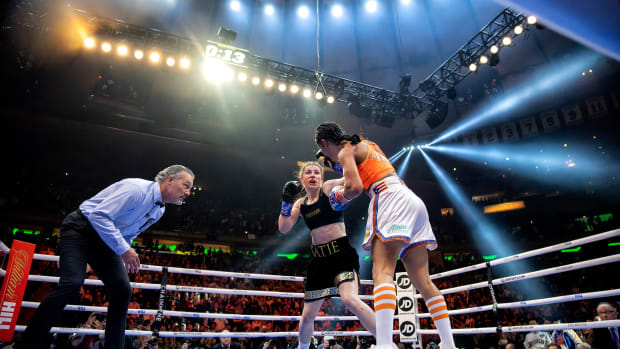
Erick W. Rasco’s hearing isn’t as good as it used to be, he says. But when SI’s director of photo operations was at Madison Square Garden on the night of April 30, 2022, even he knew it was especially loud. A sold-out crowd was there to witness what would be the boxing match of the year: Katie Taylor vs. Amanda Serrano.
“MSG has hosted boxing matches for more than a century,” SI’s Chris Mannix wrote. “You won’t find many atmospheres better than last Saturday night. More than 19,000 (mostly) paying customers churned through the gates. For every Irish fan, a Puerto Rican one, for every ‘Olé, olé, olé olé’ a ‘Yo soy Boricua’ to drown it out. Women’s boxers, past and present, filled the arena, from Christy Martin to Laila Ali, Claressa Shields to Seniesa Estrada. This wasn’t a significant women’s fight. This was a significant fight.”
Rasco, who photographed the match for SI, could feel that excitement in the lead-up to what would be a historic moment, he says.
“There’s pressure and I get nervous,” Rasco says about covering huge events. “I definitely feel it. You want to document it in the best way possible and you want to make sure you get all the relevant pictures out of the fight. … You just want to do as well as possible.”

To help stay focused, Rasco tries to prepare as much as he can. In his photographs, that manifests in how he frames photos. Instead of trying to follow the fighters as they bounce around the ring, he instead frames the shot and waits until the action enters the frame to start shooting.
“I don’t want to chase the action,” he says. “I want the action to happen within my frame. I’ll really kind of plan ahead. … I’ll have something lined up. I hope to God [the action] happens wherever I’m thinking ahead at.”
Of the many images Rasco shot of the fight, one that stands out frames Taylor, the fight’s eventual winner, lunging at Serrano, framed below the ropes surrounding the ring.
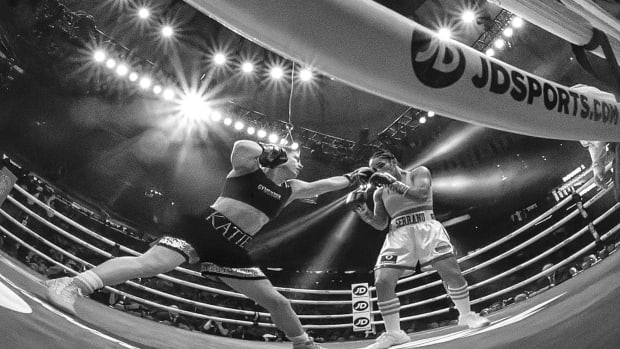
That image, Rasco says, illustrates how he prepares to shoot images to give him the best chance of capturing the important moments in well-composed photographs.
“One of the big things with this fight is that they’re headlining at Madison Square Garden,” he says. “This is an ultra-famous arena for boxing. If you go in tight the whole time, you won’t know that it’s at Madison Square Garden. One of the signature parts of Madison Square Garden is the ceiling.”
In order to include the iconic ceiling, Rasco used an 8mm fisheye lens that was pointed directly up. The body of the camera was lying on the canvas. He then lined up the lens so that the distortion of the fisheye lens wouldn’t interfere with boxers. Once Taylor and Serrano got into position, he fired away.
“That’s an example of where I was framing the shot ahead of time and waiting for the action to come through it,” he adds. “By showing that ceiling, it definitely gives it a sense of place. A lot of the other wide shots have that same notion.”
In general, Rasco enjoys covering and looking at photos of boxing matches.
“With boxing, it’s the lights, the arena, the haze, all these things play an element, at least to me. I love those pictures. So, I tend to go a little bit looser,” he says.
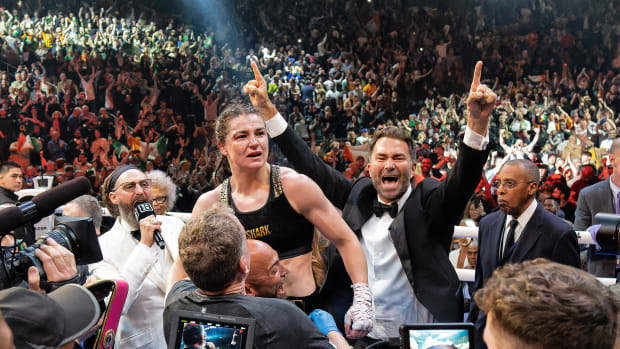
Another aspect of Rasco’s photos you may notice is his use of black and white. It’s a conscious choice, he says, to help emphasize certain elements within shots.
“If backgrounds aren’t clean and colors aren’t coordinated, it kind of bugs me. It distracts me. It’s more noise. So, the black-and-white calms me down. Then, I see textures and patterns as well in black-and-white that I wouldn’t see in color. There’s just a grittiness about it,” he says.
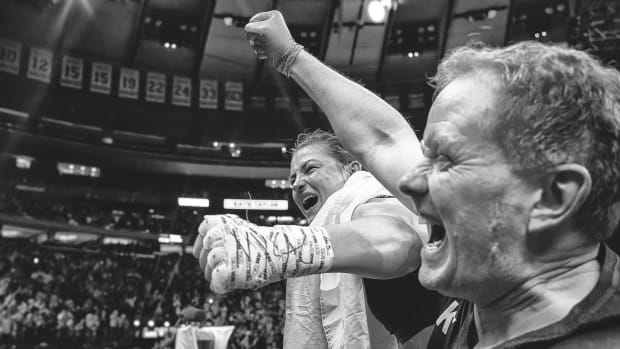
While he did shoot all of these photos in color, he re-colored some of them in the editing process. It can be helpful for seeing specific details such as the heart braided into Serrano’s head, for example, because your eyes don’t immediately go to all the bright colors that may distract you.
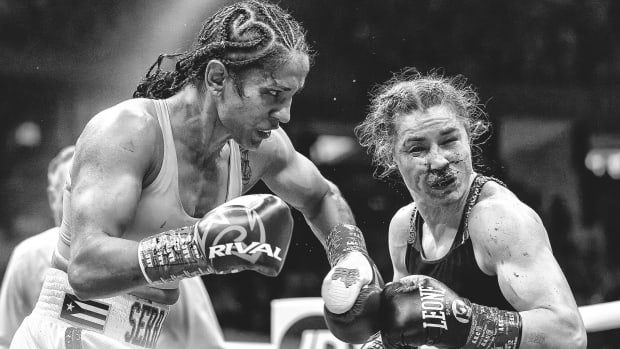
Rasco’s ability to predict, in a way, how the best shots could be composed created a set of images that document an all-time great fight.
“Leading in,” he says, “you know it’s historic. But once the fight gets going, you forget about it. It just turned into a great fight.”
Have questions, comments, or feedback about Sports Illustrated‘s newsletters? Send a note to josh.rosenblat@si.com.
